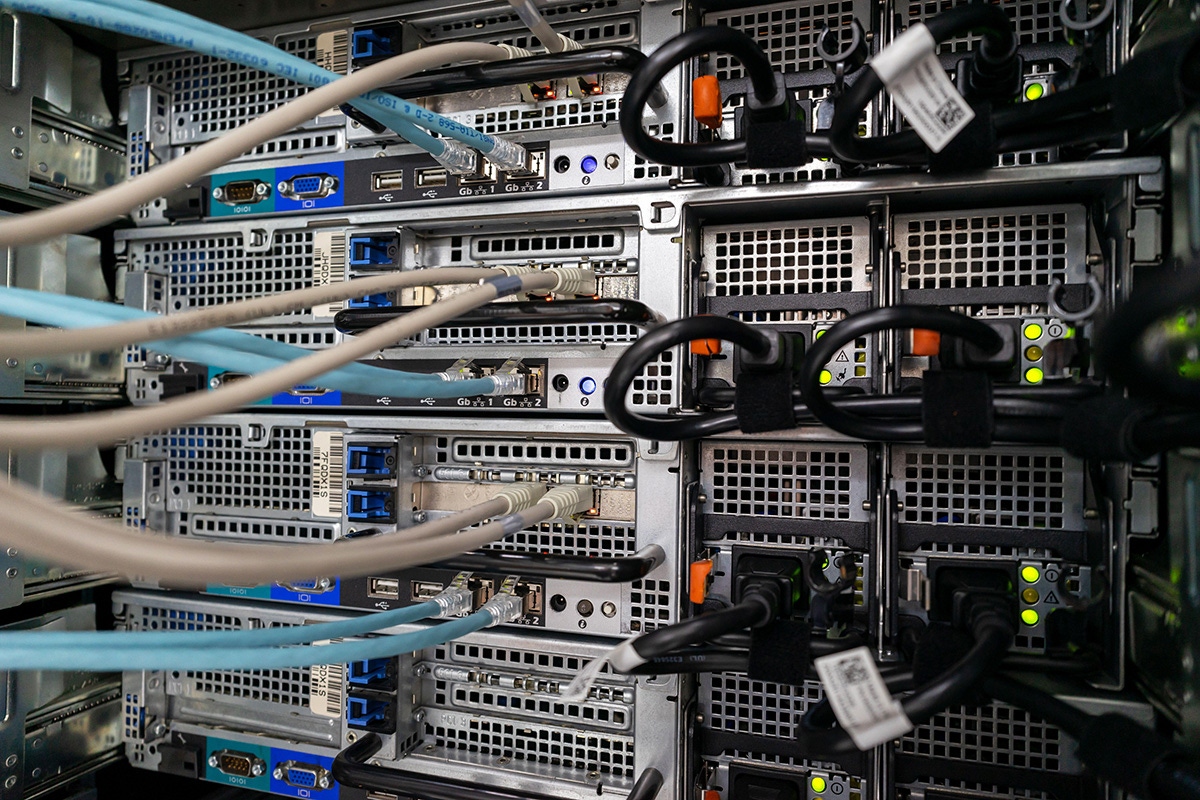Is Rear Rack Cooling Right For Your Data Center Operations?Is Rear Rack Cooling Right For Your Data Center Operations?
Rear rack cooling offers multiple benefits, but there are some potential installation challenges. Find out if rear rack cooling is the right approach for your data center.

The simplest way to cool down a data center involves the installation of air exchangers that generate cold air that’s circulated through your server rooms. But if you want to save money, at least over the long term, a better approach might be to install air exchangers at each rack and use them to cool down individual racks of servers.
The latter approach, known as "rear rack cooling," offers several advantages over more traditional air cooling systems in data centers, particularly in terms of energy efficiency.
Here's a look at how rear rack cooling works and why you may want to consider it inside a data center as a way to improve your approach to cooling.
What Is Rear Rack Cooling for Data Centers?
Rear rack cooling in data centers entails the use of air exchangers installed directly behind a server rack to cool servers housed in that rack.
In a rear rack cooling system, each server rack is equipped with an air exchanger. When the rack is operational, the air exchanger blows cool air in and pushes hot air out.
Rear Rack Cooling vs. CRAC and Direct-to-Chip Cooling
Rear rack cooling is different from conventional data center air cooling systems – known as "Computer Room Air Conditioning," or "CRAC" – because instead of blowing chilled air through the entire server room, rear rack coolers target the equipment that produces most of the heat.
In a conceptual sense, rear rack cooling is similar to direct-to-chip cooling systems, which circulate liquid around CPUs or other heat sources within servers. This is another way of focusing heat dissipation on the equipment that produces most of the heat.
However, direct-to-chip cooling systems are also expensive because they require special cooling fluid and circulators. If you want to direct your cooling resources toward heat sources but don't have the budget for direct-to-chip cooling, rear rack cooling is the next best thing.
Benefits of Rear Rack Cooling
The main benefit of rear rack cooling is that it makes more energy-efficient use of chilled air. In a CRAC system, much of the air that is blown into a server room is wasted because it does not come into contact with equipment that actually generates heat. In contrast, a rear rack cooling system targets servers in a more localized fashion, reducing waste.
Rear rack cooling can also increase data center energy efficiency (and, by extension, improve PUE metrics) because air exchangers can be turned down or off when the servers inside an individual rack are not being used at full capacity or are inactive.
CRAC systems don't typically offer this option. If you have any servers running, your entire CRAC system will likely need to be turned on – even at times when heat generation is minimal.
Finally, rear rack cooling is a less expensive cooling option than liquid cooling systems, at least when measured in terms of upfront costs. In the long run, however, liquid cooling can be less costly because it requires less energy to operate.
Rear Rack Cooling Challenges
While rear rack cooling offers multiple benefits, there are some potential hurdles to its implementation in data centers. Rear rack cooling challenges include:
More air exchangers: Because each server rack requires its own air exchanger, you have to install and maintain more exchangers than you would with a CRAC system.
Lack of backups: In most cases, each rack that is cooled by a rear exchanger only has one exchanger. If that exchanger fails, the rack may quickly overheat. CRAC systems are less prone to this type of failure because they can have multiple air exchangers, allowing them to remain operational if they experience a partial equipment failure.
Energy use: Although rear rack cooling offers some energy-saving advantages, it's less efficient than liquid cooling systems because the latter require minimum energy to operate – unlike rear rack coolers, which rely on fans that consume substantial amounts of energy.
Space usage: Rear rack coolers consume more data center space than CRAC systems, due not only to the air exchangers that must be attached to each rack but also to the piping that supplies the exchangers. As a result, these systems leave less available space for IT equipment.
When Should You Choose Rear Rack Cooling?
If you're looking for a way to increase the energy efficiency of your data center, but you don't have the budget or time to implement advanced cooling solutions like direct-to-chip or immersion cooling, rear rack cooling is a good compromise. It's more efficient and effective than traditional air systems that cool entire computer rooms, and it's less expensive and complicated to install than liquid cooling.
On the other hand, if you're focused on long-term outcomes over a period of at least several years, liquid cooling is likely to deliver better ROI than rear rack cooling, due to the higher operational efficiency of direct-to-chip and immersion systems.
About the Author
You May Also Like









